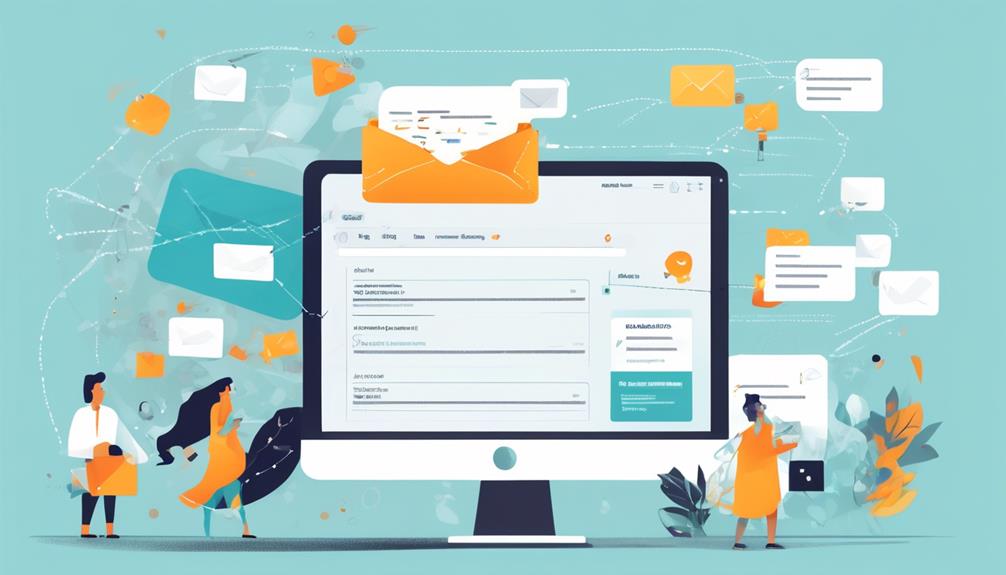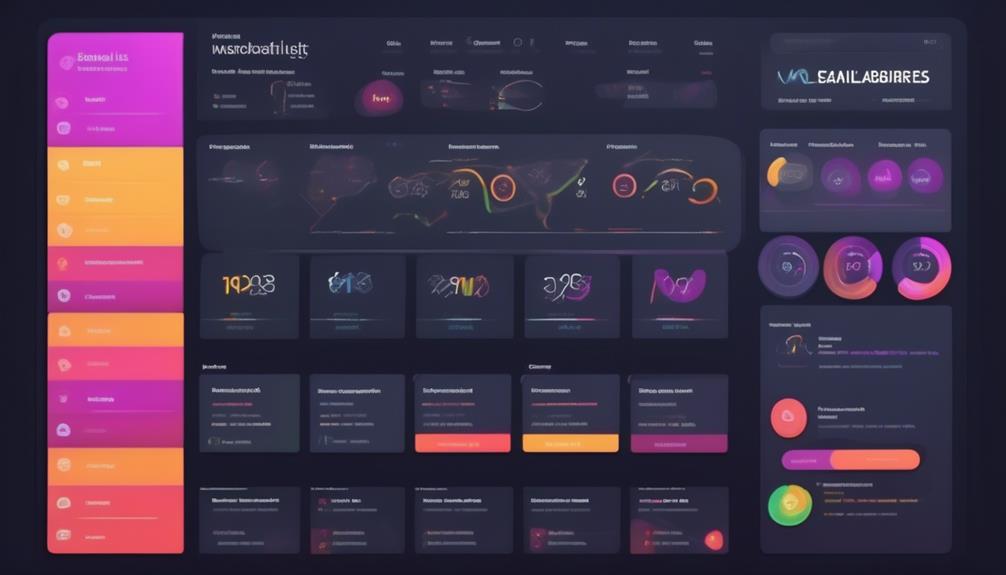We all know that having the right tools and strategies is crucial for effectively segmenting email campaigns. The difficulty lies in sorting through the many options available to find the best tools that can truly improve our segmentation success.
Well, let's start by exploring the key features and functionalities that these top tools offer, and how they can empower us to create more targeted and personalized email campaigns.
Key Takeaways
- Segmentation in email marketing is crucial for more targeted and personalized campaigns, leading to higher open and click rates, increased conversions, and improved customer loyalty.
- Utilizing dynamic content and targeted messaging plays a crucial role in creating personalized email content, increasing relevance and effectiveness.
- Behavioral segmentation allows for grouping subscribers based on actions and interactions, leading to improved campaign targeting and overall performance.
- Geographic segmentation enhances the relevance of email campaigns by personalizing content based on local events and preferences, resulting in higher engagement and conversion rates.
Understanding Segmentation in Email Marketing
Understanding segmentation in email marketing is crucial for sending more relevant and engaging messages to smaller groups of subscribers based on specific criteria. By dividing our audience into segments, we can tailor our content to better resonate with each group, ultimately leading to higher open and click rates, increased conversions, and improved customer loyalty and retention. This targeted approach allows us to deliver content that's more personalized and valuable to our subscribers, enhancing their overall experience with our brand.
Segmentation in email marketing enables us to avoid spam filters and increase email deliverability, as well as build trust and boost engagement, retention, leads, conversions, revenue, and customer lifetime value. It's essential to strike a balance between personalization and respecting customer privacy, ensuring that we enhance the user experience without intruding on their boundaries.
Utilizing the best email marketing tools for personalization and segmentation, such as Mailchimp, HubSpot, Campaign Monitor, ActiveCampaign, Sendinblue, Drip, and AWeber, empowers us to create targeted campaigns that speak directly to the unique needs and preferences of our audience segments.
Importance of Email Campaign Segmentation
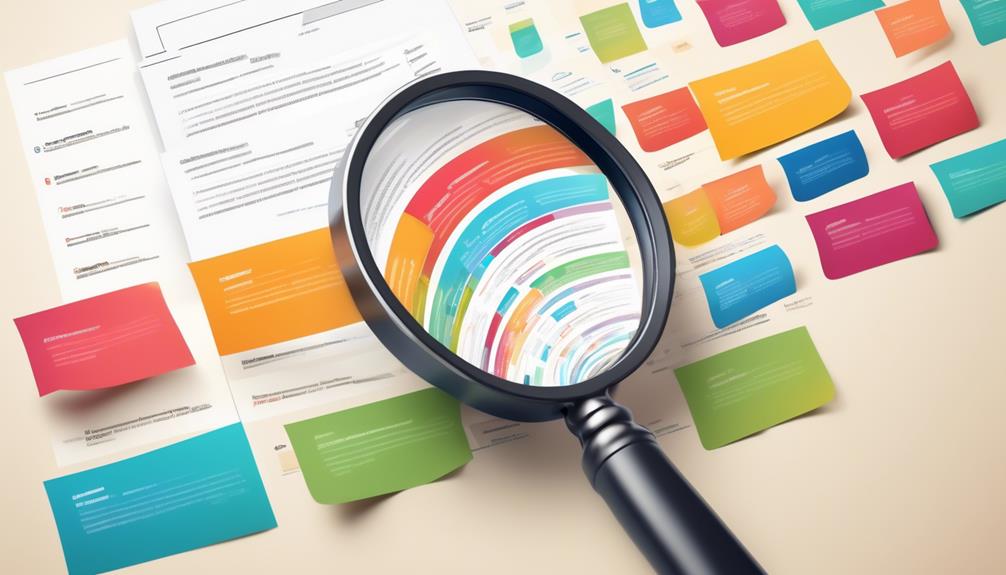
Implementing email campaign segmentation is a crucial strategy for tailoring messages to different audience groups based on their specific characteristics and behaviors. By utilizing segmentation options in our email marketing campaigns, we can send more relevant content to our subscribers, ultimately leading to higher customer engagement.
This targeted approach helps us avoid sending irrelevant content to our subscribers, reducing the chances of unsubscribes and spam complaints. Furthermore, segmentation allows for more personalized communication, which can result in improved customer satisfaction and loyalty.
Understanding the importance of email campaign segmentation enables us to better understand our audience and their preferences, leading to an overall improved marketing strategy. Ultimately, effective segmentation empowers us to deliver the right message to the right audience at the right time, resulting in improved customer engagement and conversion rates.
Personalized Email Content Creation
When it comes to personalized email content creation, dynamic content and targeted messaging play crucial roles in engaging recipients.
By tailoring the content to individual preferences and behaviors, we can increase the relevance and effectiveness of our email campaigns.
Understanding the specific interests and past interactions of our audience segments allows us to create unique and compelling content that resonates with each recipient.
Dynamic Content
Our email campaign segmentation tools allow for the creation of personalized email content through the use of dynamic content. This enables us to deliver relevant and engaging messages tailored to each subscriber's preferences and behavior.
By leveraging dynamic content, we can insert subscriber-specific information into our emails. This maximizes engagement and delivers individualized messages to different segments of our audience.
This real-time customization ensures that our emails are always tailored to our audience's preferences. It also leads to enhanced performance metrics and optimized conversions.
Dynamic content empowers us to personalize at scale, reaching each subscriber with content that resonates with their specific needs and interests. As a result, our email marketing efforts are more impactful, driving stronger connections and higher levels of engagement with our audience.
Targeted Messaging
Crafting personalized email content tailored to specific segments of our audience enhances engagement and conversion rates by delivering relevant and valuable information to the recipients. Targeted messaging allows us to create messages that resonate with customers based on their preferences, behaviors, and demographics.
This personalized approach increases engagement and conversion rates by ensuring that each email communication is optimized to meet the unique needs and interests of different segments within our subscriber base. By leveraging targeted messaging, we can build stronger relationships with our audience and enhance brand loyalty.
This level of segmentation ensures that our emails are more than just generic blasts; they become valuable resources that speak directly to the individual needs and interests of our diverse customer base.
Behavioral Segmentation for Email Campaigns
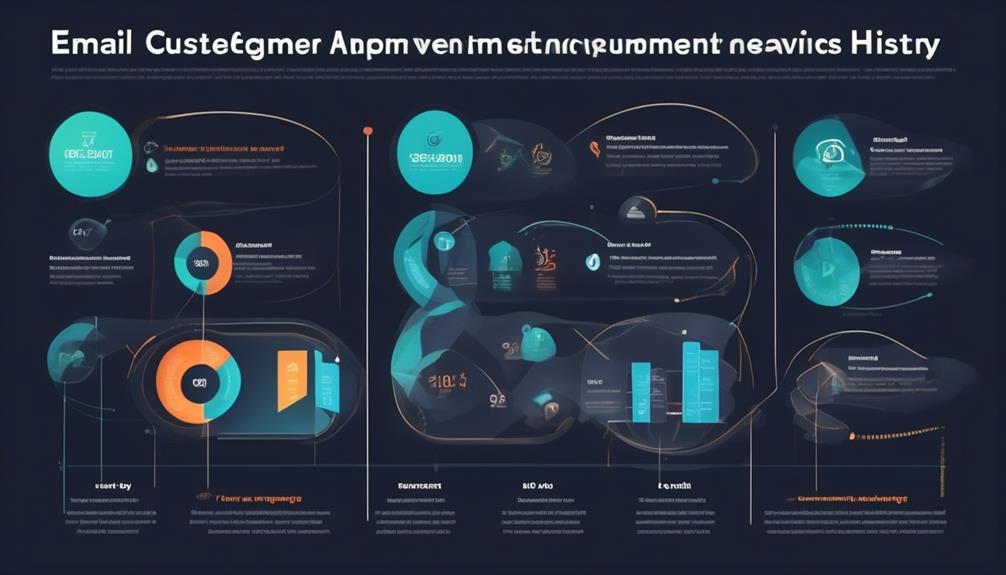
Analyzing user behavior is crucial for creating targeted and effective email campaigns that maximize engagement and conversions.
Behavioral segmentation in email marketing involves grouping subscribers based on their actions, preferences, and interactions with your brand.
By analyzing behavioral data such as purchase history, website visits, and email engagement, marketers can send highly relevant and personalized emails to specific segments.
This targeted approach can significantly improve customer loyalty and retention by delivering content that resonates with individual recipients.
Implementing behavioral segmentation can lead to improved open and click-through rates, as well as better overall campaign performance.
By understanding how subscribers engage with content and products, marketers can tailor their email campaigns to better meet the needs and interests of their audience.
Ultimately, behavioral segmentation is a powerful tool for increasing the effectiveness of email marketing efforts and driving higher levels of engagement and conversions.
Geographic Segmentation for Email Targeting

Geographic segmentation enables us to target specific regions and cater to local customer preferences, enhancing the relevance of our email campaigns. This approach allows us to personalize content, offers, and promotions based on the unique interests and events in different locations, ultimately boosting engagement.
Location-Based Targeting
How can Location-Based Targeting enhance the effectiveness of email campaigns by tailoring content to subscribers' geographical regions?
Location-based targeting allows us to segment our customer base according to their geographic location, enabling us to send targeted content that's specific to their region.
By leveraging this segmentation strategy, we can create personalized campaigns tailored to local events, holidays, or weather conditions relevant to our subscribers' geographic area.
This approach increases the relevance of our emails, leading to higher engagement and conversion rates.
Furthermore, it enables us to gain insights into the performance of our email campaigns across different geographic locations, allowing us to refine our strategies and optimize future communications based on the specific preferences and behaviors of each region.
Ultimately, location-based targeting not only enhances the overall customer experience but also strengthens our connections with subscribers by demonstrating an understanding of their regional context and preferences.
Regional Customer Preferences
Understanding regional customer preferences through geographic segmentation allows businesses to tailor their email campaigns to local interests and cultural nuances, enhancing the relevance of the content for subscribers. By identifying regional customer preferences, marketers can create targeted content that resonates with recipients, ultimately improving engagement and conversion rates.
Geographic segmentation enables us to deliver localized offers and promotions, aligning with the customer journey and increasing the likelihood of purchase. Moreover, it allows for the customization of email campaigns based on local events, holidays, and trends, making the content more compelling and relatable for recipients.
Recognizing regional customer preferences is integral to segmentation success, as it fosters a deeper connection with subscribers and demonstrates an understanding of their specific needs and interests.
Demographic Segmentation for Email Marketing
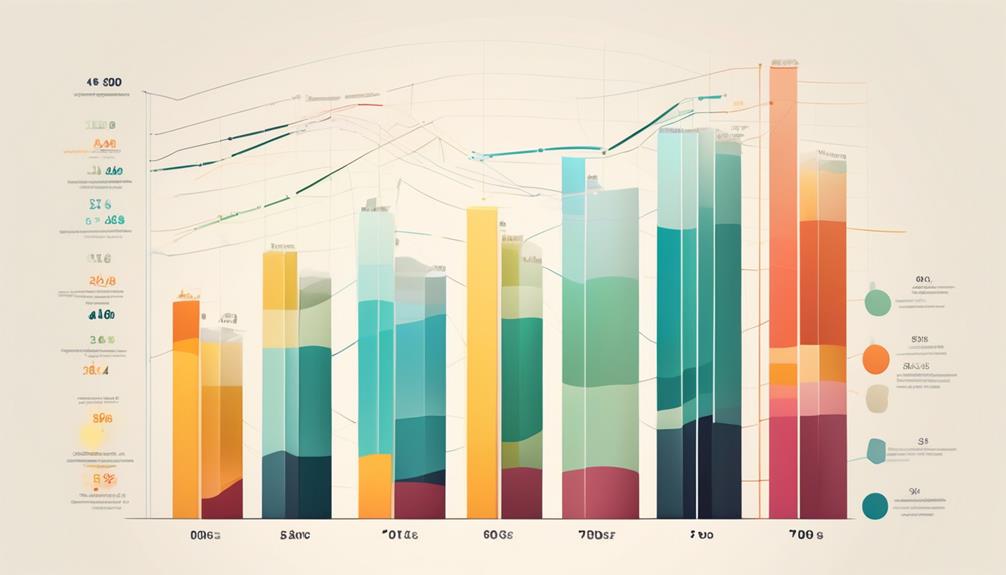
What are the key benefits of utilizing demographic segmentation for email marketing? Demographic segmentation allows us to divide our email list into smaller, more targeted groups based on specific demographic criteria such as age, gender, income, education, occupation, or marital status. This type of segmentation enables us to send more personalized and relevant messages to each group, ultimately leading to higher open and click rates, increased conversions, and greater customer loyalty. By tailoring content to match the characteristics and interests of each segment, we can create a more engaging and effective email marketing campaign. Additionally, demographic segmentation helps us avoid sending irrelevant content to subscribers, leading to higher email deliverability and a lower risk of being marked as spam. Leveraging demographic segmentation also allows us to stand out from the competition by sending targeted and personalized emails that resonate with each segment of our audience.
| Benefits of Demographic Segmentation |
|---|
| More personalized messages |
| Higher open and click rates |
| Increased conversions |
| Greater customer loyalty |
| Avoidance of irrelevant content |
Psychographic Segmentation for Email Campaigns
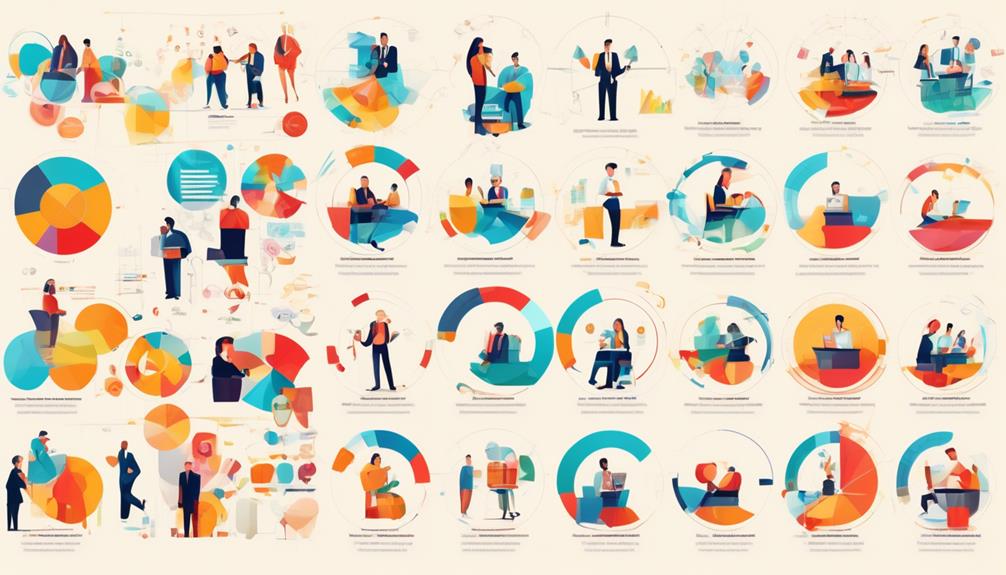
When it comes to email campaign segmentation, understanding the psychological characteristics of our audience is crucial.
By segmenting based on behaviors and personal preferences, we can create tailored content that resonates deeply with recipients.
This approach can significantly boost engagement, conversions, and overall customer loyalty.
Behavior-Based Segmentation
Utilizing behavior-based segmentation in email campaigns allows for personalized targeting of customers based on their behavior and psychological attributes, leading to more impactful and effective communication.
By leveraging behavior-based segmentation, email campaigns can be tailored to meet the specific needs, preferences, and interests of different customer segments. This approach enables the creation of customized content and messaging that resonates with the emotions and motivations of each segmented audience.
Marketers can use behavior-based segmentation to gain insights into the unique behaviors and attitudes of their audience, allowing for the delivery of more impactful and effective email campaigns.
Additionally, this strategy enables the use of marketing automation to send targeted and relevant communications, ultimately leading to higher engagement, conversion rates, and customer satisfaction in email campaigns.
Personalized Content Creation
By understanding the psychological aspects of subscribers, we can craft email campaigns that speak directly to their unique needs and aspirations, fostering deeper connections and engagement through personalized content creation using psychographic segmentation.
Personalized content creation involves tailoring email content to match individual subscribers' preferences, behaviors, and interests.
Psychographic segmentation analyzes subscribers based on their attitudes, values, lifestyle, and personality traits to create content that resonates with their motivations and desires.
This approach enhances email design by delivering highly relevant and compelling content, increasing open rates, click-through rates, and ultimately, conversions.
Moreover, incorporating psychographic segmentation into email marketing allows for more effective communication that aligns with the emotional and psychological drivers of the target audience, leading to improved campaign performance and customer loyalty.
Technographic Segmentation for Email Targeting

Using technographic segmentation in email targeting allows for personalized messaging tailored to recipients' technology preferences, ultimately leading to improved engagement and conversion rates. By categorizing contacts based on their technology usage, such as software, hardware, and technology stack, marketers can create more relevant and targeted campaigns. This approach enables the delivery of messages that resonate with the recipients' tech preferences, resulting in higher open rates, click-through rates, and conversions.
To better understand the impact of technographic segmentation, let's consider the following table showcasing how email marketing tools can be leveraged for this purpose:
| Email Marketing Tools | Technographic Segmentation Features |
|---|---|
| Customer.io | Segmentation based on tech stack |
| HubSpot | Targeting based on software usage |
| Salesforce Marketing Cloud | Hardware preferences segmentation |
Incorporating technographic segmentation into email targeting strategies aligns the content and offerings with the recipients' technology needs and preferences, enhancing the overall effectiveness of email campaigns. This targeted approach ensures that the right message reaches the right audience, driving better results in terms of engagement and conversions.
Tools for Customer Segmentation
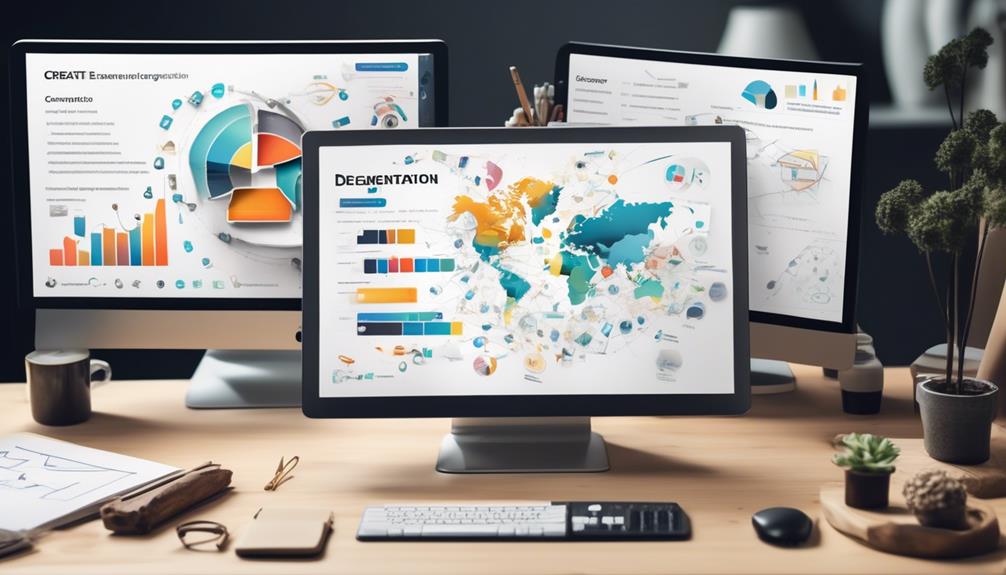
Discussing customer segmentation tools, we can leverage the insights gained from technographic segmentation to create targeted and personalized email campaigns.
When it comes to customer segmentation, leveraging the right tools is crucial for the success of email marketing strategies. Several email marketing platforms offer advanced features for effective customer segmentation.
Mailchimp, for instance, provides a user-friendly interface and dynamic content features for personalization and segmentation.
HubSpot stands out with its powerful marketing automation and advanced segmentation capabilities, enabling effective customer segmentation.
Campaign Monitor offers drag-and-drop simplicity and robust personalization options, enhancing email marketing campaigns.
ActiveCampaign provides dynamic content and conditional blocks based on user behavior, supporting effective email personalization and segmentation.
Additionally, Sendinblue and Drip offer comprehensive solutions with personalized product recommendations, further enhancing email marketing personalization and segmentation.
Data-Driven Segmentation Strategies
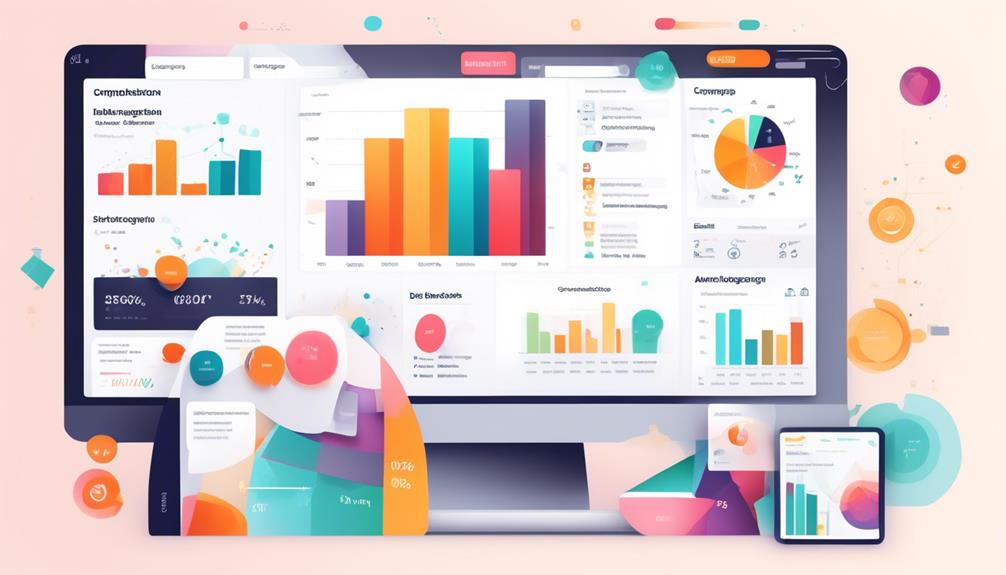
Data-driven segmentation strategies leverage customer data to create targeted email segments for personalized communication, maximizing engagement and improving campaign effectiveness. By analyzing customer behavior and preferences, data-driven segmentation allows for real-time updates to customer segments, leading to more relevant and engaging messages.
These strategies maximize engagement by sending personalized communications to specific customer segments, resulting in improved open and click rates, as well as increased conversions and sales. Real-time performance metrics provided by data-driven segmentation strategies enable marketers to track campaign effectiveness and make data-informed decisions for increasing conversions.
Furthermore, data-driven segmentation strategies contribute to improved customer loyalty and retention, as they ensure that messages are tailored to individual preferences, enhancing the overall customer experience.
In essence, data-driven segmentation strategies play a crucial role in enhancing email campaign segmentation, ultimately leading to improved marketing performance and customer engagement.
Best Practices for Email Segmentation Success
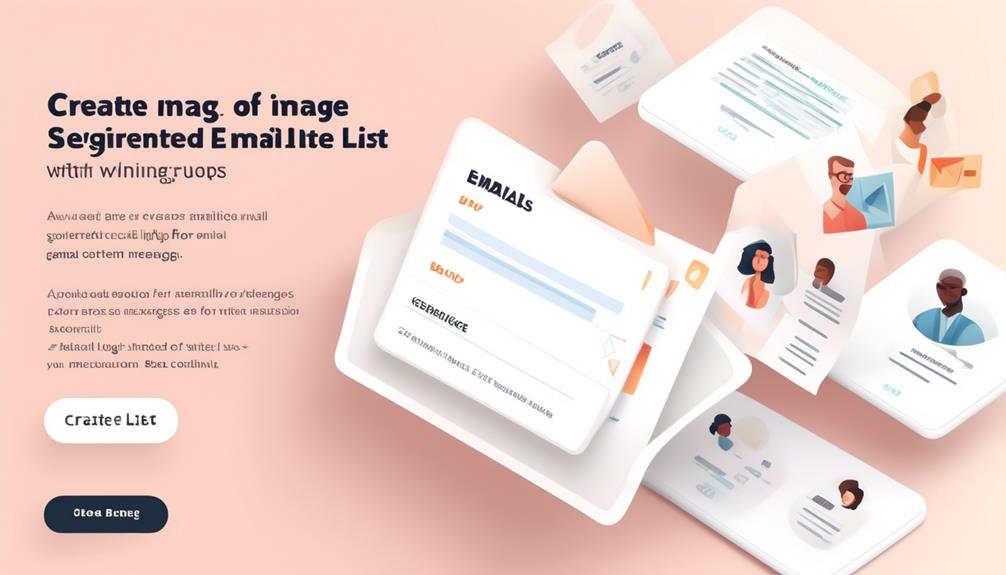
Building on the foundation of data-driven segmentation strategies, implementing best practices for email segmentation success is essential for maximizing engagement and improving campaign effectiveness.
When it comes to email marketing, segmentation is crucial, and following best practices can significantly impact the success of your campaigns. Here are some best practices for email segmentation success:
- Utilize Advanced Segmentation Tools:
Invest in marketing platforms that offer advanced segmentation capabilities, allowing for the creation of highly targeted and personalized email campaigns based on a wide range of criteria.
- Leverage Real-Time Data:
Utilize real-time data to continually update and refine customer segments, ensuring that your email communications are always timely and relevant.
Optimizing Email Segmentation Results

To enhance the effectiveness of email segmentation, we can optimize results by utilizing dynamic content and advanced segmentation techniques to personalize emails and maximize engagement.
By incorporating dynamic content, we can tailor emails to specific segments based on factors such as demographics, behavior, and preferences. This level of personalization can significantly increase the relevance of the messages, leading to higher open rates, click-through rates, and conversions.
Additionally, leveraging advanced segmentation allows for the creation of highly targeted campaigns that are more likely to resonate with recipients. By analyzing real-time performance metrics, we can continuously refine customer segments, ensuring that our email campaigns remain effective and impactful.
Furthermore, the use of automated email sending and personalized communications enables us to engage with our audience in a timely and tailored manner, fostering stronger connections and driving customer loyalty.
Ultimately, optimizing email segmentation results involves creating targeted and relevant content, leveraging advanced segmentation techniques, and utilizing real-time data to refine and enhance our campaigns for maximum impact.
Frequently Asked Questions
What Is the Best Way to Run Segmented E Mail Campaign?
We find the best way to run segmented email campaigns is by using marketing automation platforms to segment customer lists based on behavior, demographics, and engagement.
Utilizing personalized communications and tracking performance metrics helps in increasing conversions.
It's essential to focus on engaging and retaining your audience by sending automated emails, push notifications, SMS, and in-app messages.
This approach ensures targeted and timely emails for better insights and standing out in customers' inboxes.
How Do You Track the Success of an Email Campaign?
We track the success of an email campaign by monitoring open rates, click-through rates, conversion rates, and bounce rates. These metrics help us understand how many recipients are engaging with our campaigns, how effective our content is at encouraging action, the overall success in driving desired actions, and if our email list is up-to-date.
Additionally, A/B testing allows us to compare different elements and understand what resonates best with our audience.
How Can I Improve My Email Segmentation?
We can improve email segmentation by analyzing customer data and tailoring content to specific interests. This enables us to send targeted messages, increasing engagement and conversion rates.
By leveraging segmentation tools, we can divide our subscriber lists based on behavior, demographics, and preferences, delivering personalized content.
This approach fosters a deeper connection with our audience and enhances the overall effectiveness of our email campaigns.
What Is the Best Tool for Email Marketing?
We've found that the best tool for email marketing depends on your specific needs.
Mailchimp offers a user-friendly interface and dynamic content features, while HubSpot provides powerful marketing automation and advanced segmentation capabilities.
Campaign Monitor is known for its drag-and-drop simplicity and robust personalization options.
ActiveCampaign offers dynamic content and conditional blocks based on user behavior.
Sendinblue and Drip provide comprehensive solutions and personalized product recommendations.
What are the Top Tools for Email Campaign Segmentation Success?
When it comes to achieving success in email campaign segmentation, implementing key email campaign segmentation strategies is crucial. Some of the top tools for achieving this success include Mailchimp, Constant Contact, and HubSpot. These platforms offer advanced segmentation features to help target the right audience with personalized content.
Conclusion
In conclusion, email campaign segmentation is a powerful tool for delivering personalized and targeted content to subscribers. By using the right tools and strategies, marketers can create more engaging and effective email campaigns.
With these tools, we can unlock the potential of our email lists and deliver content that speaks directly to the hearts and minds of our audience, like a master painter adding intricate details to a masterpiece.
